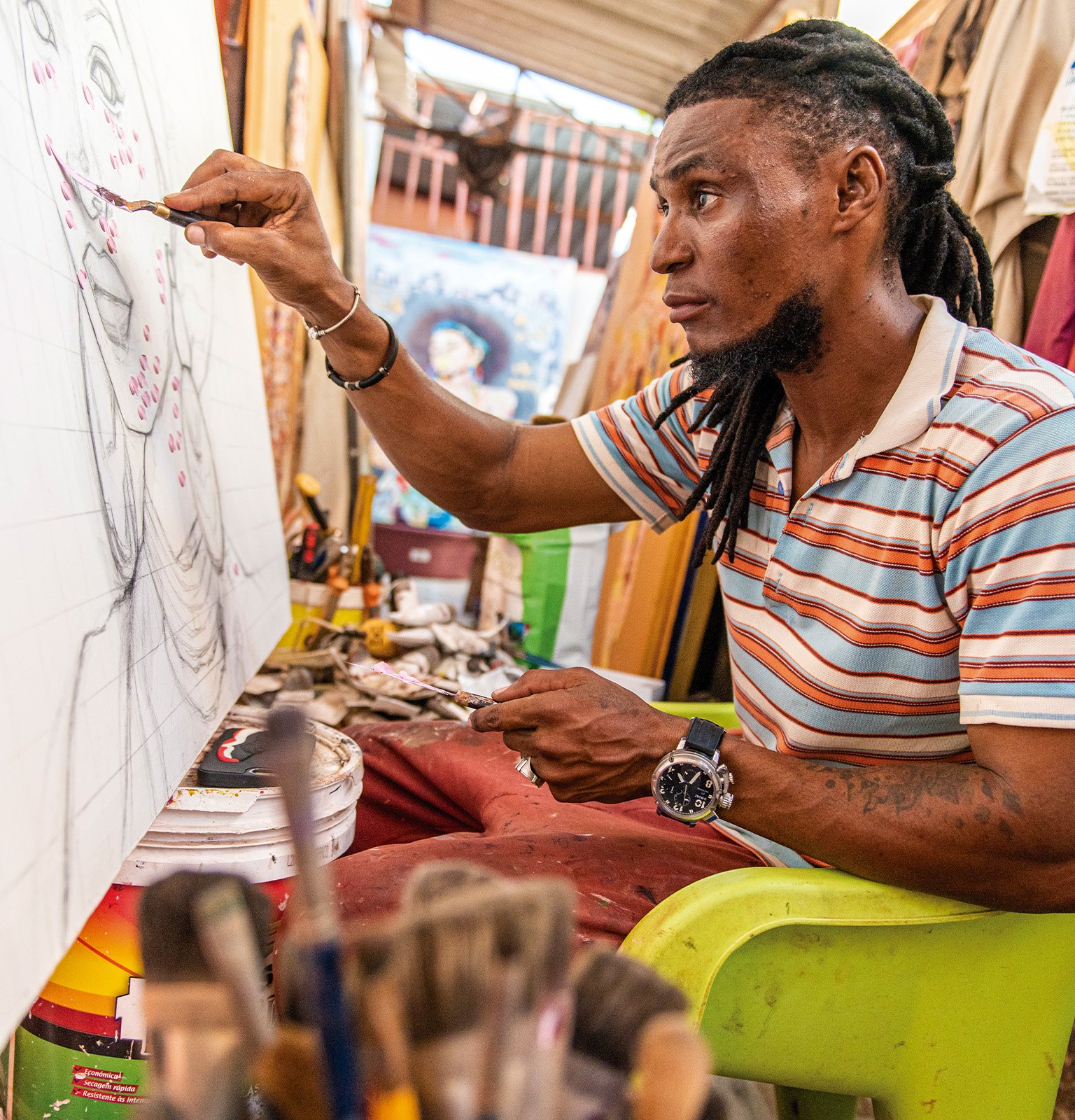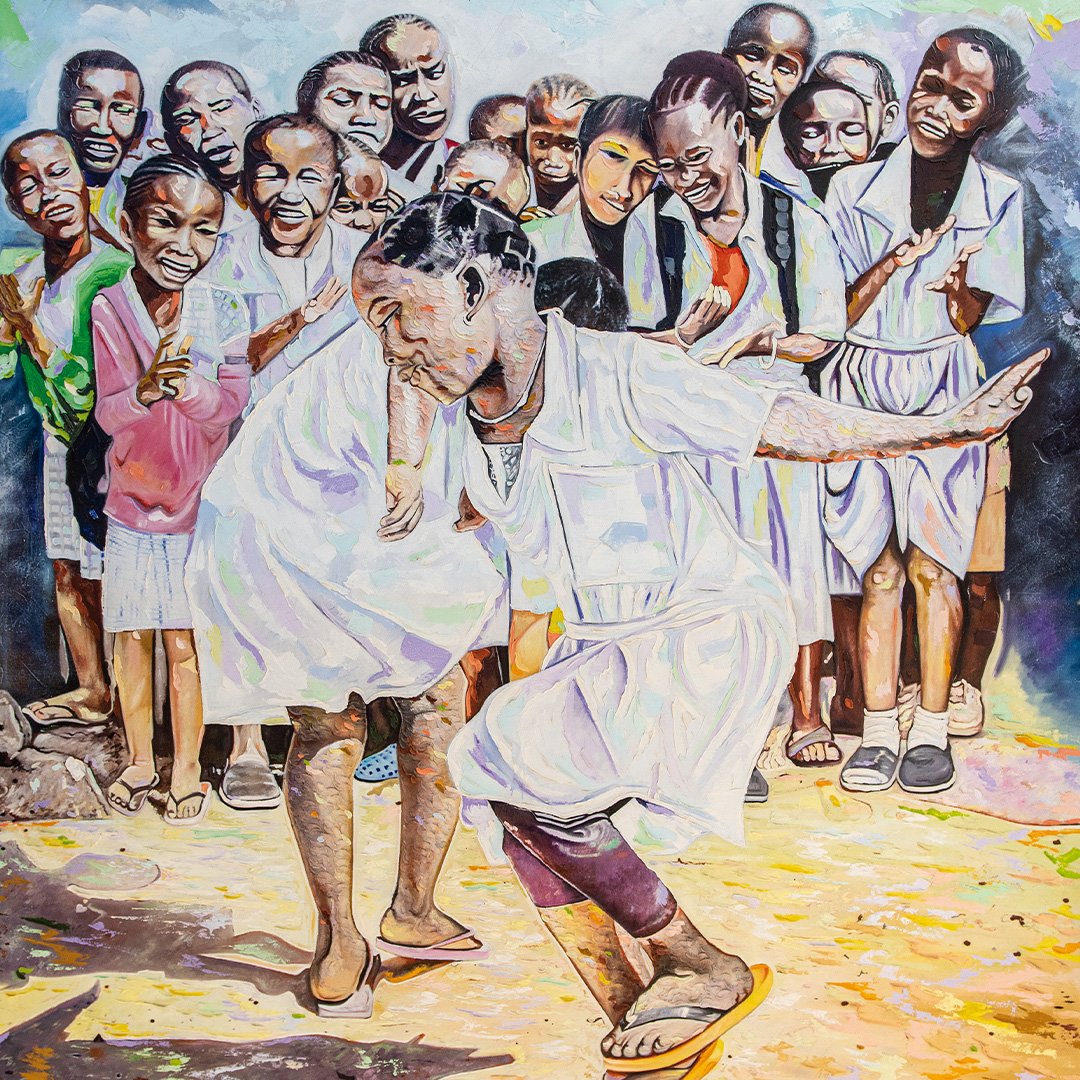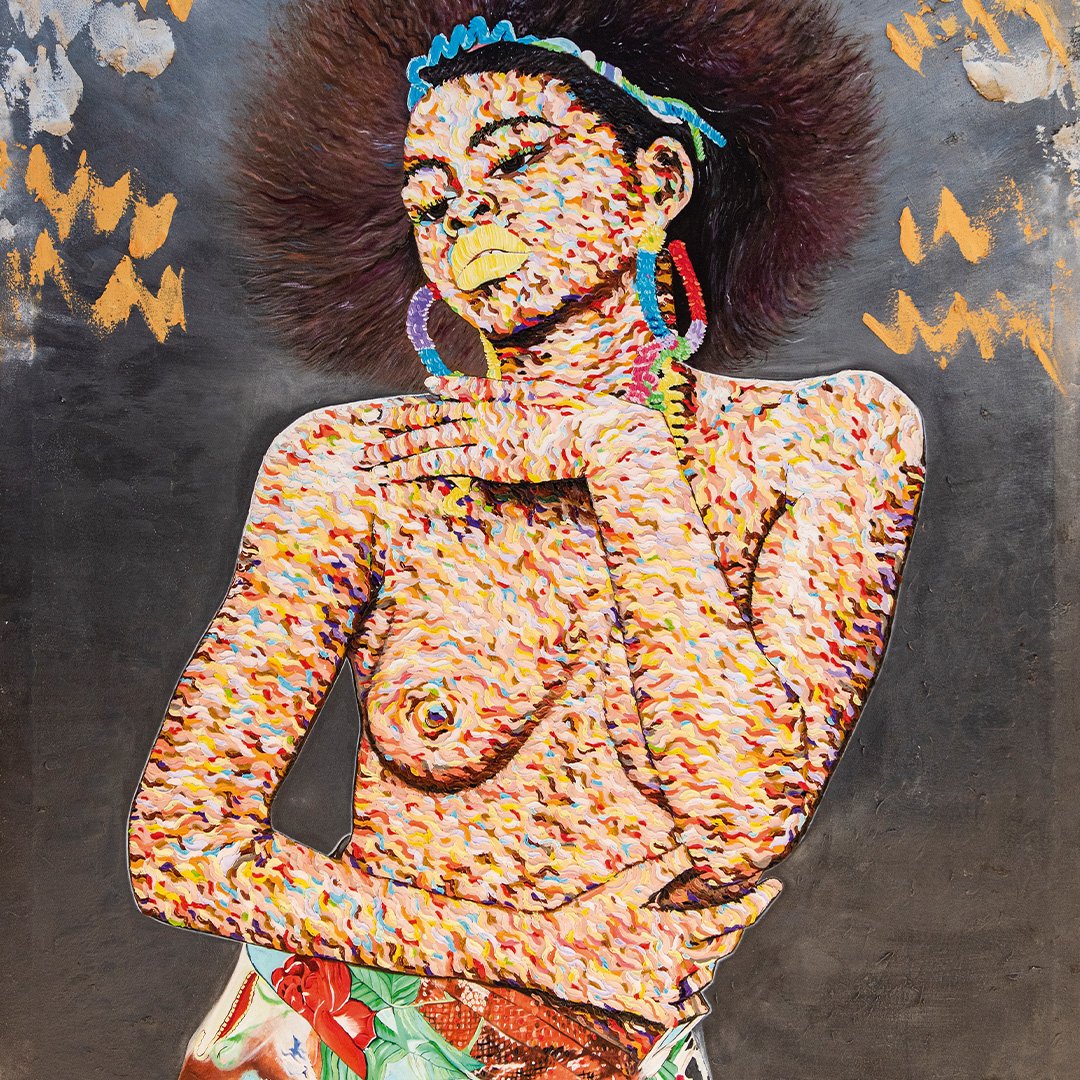
Art has dubbed him
Bolondo, but in times when he takes a break from his work, he goes by Papino
Simão Mbongo. His dream is to be part of the world, and he has already
conquered some countries. His roots are in Angola, but when he speaks to us his
accented language proves that Africa wasn’t his only home. In conversation, we
found out that he has lived in France, where he has taken part in group
exhibitions. He graduated in fine arts from the Academy of Fine Arts in the
Democratic Republic of Congo and spent part of his life there with his family.
Art appeared in his life as a child and took the form of comic strips. Today,
it’s no longer comic strips that drive his artistic vein, but women portrayed
in the light of expressionism. Colour is synonymous with life for him, hence
the explosion of colour in every work he paints. What guides him? Instinct. Who
inspires him? God. When asked about the origins of his artistic name, he
quickly replies: «Bolondo is a name with power in Angola, like a baobab, the
country’s typical tree». It wasn’t until sometime later that we realised what
he was talking about - after some reflection. The baobab is the tree that
contemplates the world with patience and experience, it only has leaves at the
right time and is economical in its gestures. Just like Bolondo’s way of being.
The baobab whispers Africa, its scorching sunsets, its bright colours and the
women who carry the children of a nation on their chests. Just like Bolondo’s
art. The analogy has stuck in our minds, and this seems like a good starting
point to get to know him.






